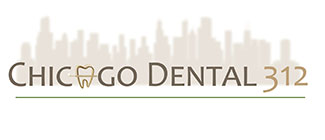FAQ
Q. How often should I see a dentist?
A. The American Dental Association (ADA) recommends visiting a dentist at least twice a year for a check-up and a professional cleaning. This is true for most patients but some require more frequent visits due to higher rates of tartar build-up and genetic predisposition for gum disease. For these patients, we often recommend cleanings every 3-4 months to prevent the irreversible effects of gum disease (such as bone and tooth loss). Patients who have no previous dental problems, no genetic predisposition for gum disease and minimal build-up can be seen every 9-12 months. An oral cancer screening is recommended at least annually.
Q. What do I do if I have a dental emergency?
A. Please call our office as soon as you determine that you have a dental emergency. If you have a dental emergency during regular business hours, we will be glad to work you into our schedule. After hours, over the weekend and during holidays, please email the doctor chicagodental312@gmail.com , being sure to include the nature of the problem and best contact number to call you back.
Q. What kind of toothbrush should I use?
A. Adults should use a small-to-medium size toothbrush with soft-to-medium bristles. The head of the brush needs to be small enough to brush all areas of the mouth thoroughly, specifically the back of the mouth, which can be hard to reach. Children should use small toothbrushes with soft bristles. People with sensitive teeth can benefit from using gentle, soft bristled toothbrushes. Dr. Van Fossen advocates electric toothbrushes, especially sonic ones. These brushes have a built-in timer to ensure you brush for a full 2 minutes and the brushing power extends further between the teeth than you can reach with a manual toothbrush alone.
Q. How often should I replace my toothbrush?
A. It depends. The American Dental Association recommends that you replace your brush every 3 to 4 months, but that may be too frequent for some who have a gentler technique. With each use, the bristles become worn and cleaning effectiveness decreases. Most brushes have a colored indicator that rubs away as the bristles break down at the ends. A good rule of thumb is if the brush starts losing it's original shape, it's time to get a new one.
Q. Is a powered toothbrush more effective than a manual toothbrush?
A. In my professional opinion, yes. The majority of patients do better with an electric toothbrush. Most electric toothbrushes have a 2 minute timer ensuring you brush long enough. Sonic brushes vibrate at a speed we can't achieve with our arm allowing water to have a "powerwashing" effect not only on the easily reached surfaces but under the gumline and between the teeth where the aggressive bacteria tend to accumulate. If you have difficulty using a manual toothbrush, a powered toothbrush may be much more comfortable and easier to use.
Q. Should I brush or floss first?
A. As long as you brush and floss thoroughly, it does not matter if you brush then floss or floss then brush. However, flossing before brushing enables the fluoride in your toothpaste to better reach the areas between the teeth.
Q. Is one type of toothpaste better than the others?
A. No. However, we recommend you use a toothpaste that contains fluoride and carries the ADA Seal of Acceptance, which means it has been assessed for safety and effectiveness. Studies consistently show that fluoride helps strengthen and rebuild tooth structure, and helps prevent dental decay.
Q. Are payment plans available for my dental treatment?
A. Yes. We accept most major credit cards and many types of dental insurance. We will process your insurance claim for you upon receipt of your co-payment.
